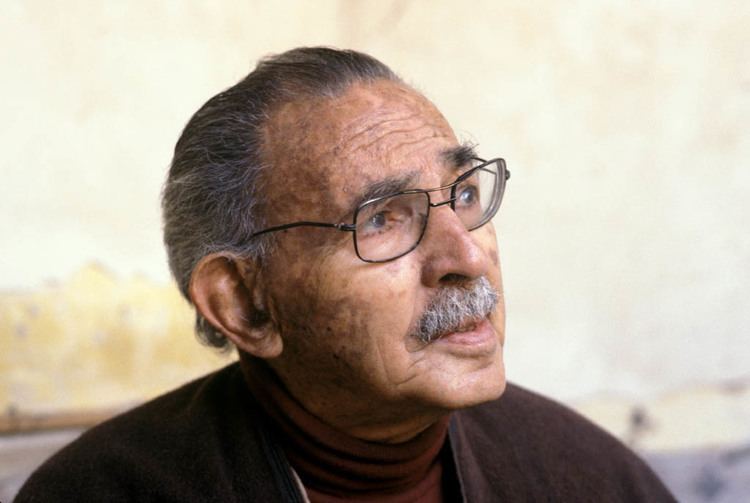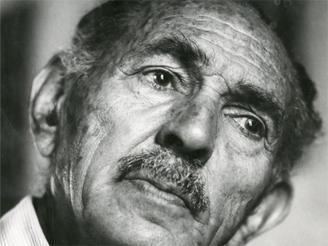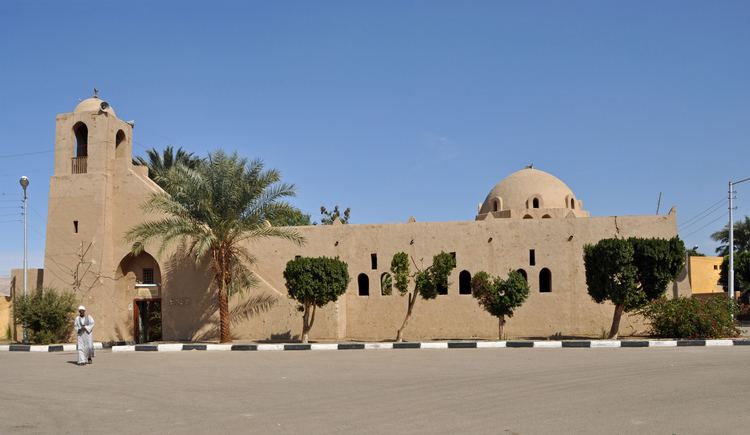Nationality Egyptian Role Architect | Name Hassan Fathy Occupation Architect Awards UIA Gold Medal | |
 | ||
Books Architecture for the poor, Natural energy and vernacular architecture, Gourna; a tale of two villages, City of the Future Similar People James B Steele, Averroes, James Maude Richards | ||
Hassan fathy architect of the poor part 1
Hassan Fathy (1900–1989, Egyptian Arabic: حسن فتحي) was a noted Egyptian architect who pioneered appropriate technology for building in Egypt, especially by working to reestablish the use of adobe and traditional as opposed to western building designs and lay-outs. Fathy was recognized with the Aga Khan Chairman's Award for Architecture in 1980. In 2017, Google celebrated Fathy with a Google Doodle for "pioneering new methods [in architecture], respecting tradition, and valuing all walks of life".
Contents
- Hassan fathy architect of the poor part 1
- Architect hassan fathy 1978
- Early life
- Career
- Legacy
- Windcatchers in Egypt
- Personal life
- References

Architect hassan fathy 1978
Early life

Hassan Fathy was born in Alexandria in 1900, to an upper-class Egyptian father and a mother of Turkish origin.

He trained as an architect in Egypt, graduating in 1926 from the King Fuad University (now Cairo University).
Career

Hassan Fathy was a cosmopolitan trilingual professor-engineer-architect, amateur musician, dramatist, and inventor. He designed nearly 160 separate projects, from modest country retreats to fully planned communities with police, fire, and medical services, markets, schools, theatres, and places for worship and recreation. These communities included many functional buildings such as laundry facilities, ovens, and wells. He utilized ancient design methods and materials, as well as knowledge of the rural Egyptian economic situation with a wide knowledge of ancient architectural and town design techniques. He trained local inhabitants to make their own materials and build their own buildings.

He began teaching at the College of Fine Arts in 1930 and designed his first adobe buildings in the late 1930s. Fathy gained international critical acclaim for his involvement in the construction of Kurna, located on Luxor's West Bank, built to resettle the tomb robbers that operated in the Valley of the Kings and the Valley of the Queens. This project was applauded in a popular British weekly in 1947 and soon after in a British professional journal; further articles were published in Spanish, French and in Dutch.
In 1953 he returned to Cairo, heading the Architectural Section of the Faculty of Fine Arts in 1954.
Fathy's next major engagement was designing and supervising school construction for Egypt's Ministry of Education.
In 1957, frustrated with bureaucracy and convinced that buildings designed with traditional methods appropriate to the climate of the area would speak louder than words, he moved to Athens to collaborate with international planners evolving the principles of ekistical design under the direction of Constantinos Apostolou Doxiadis. He served as the advocate of traditional natural-energy solutions in major community projects for Iraq and Pakistan and undertook extended travel and research for the "Cities of the Future" program in Africa.
Returning to Cairo in 1963, he moved to Darb al-Labbana, near the Cairo Citadel, where he lived and worked for the rest of his life. He also did public speaking and private consulting. He was a man with a riveting message in an era searching for alternatives in fuel, personal interactions, and economic supports.
He left his first major international position, at the American Association for the Advancement of Science in Boston, in 1969 to complete multiple trips per year as a leading critical member of the architectural profession.
His authoritative book on Gourna, published in a limited edition in 1969, became even more influential in 1973 when it gained a new English title, 'Architecture for the Poor'.
His participation in the first U.N. Habitat conference in 1976 in Vancouver which was followed shortly by two events that significantly shaped the rest of his activities. He began to serve on the steering committee for the nascent Aga Khan Award for Architecture and he founded and set guiding principles for his Institute of Appropriate Technology.
In 1980, he was awarded the Balzan Prize for Architecture and Urban Planning and the Right Livelihood Award.
He held several government positions and died in Cairo in 1989.
Legacy
Fathy has been called Egypt's best-known architect since Imhotep.
An appreciation of the importance of Fathy's contribution to world architecture became clear only as the twentieth century waned. Climatic conditions, public health considerations, and ancient craft skills also affected his design decisions. Based on the structural massing of ancient buildings, Fathy incorporated dense brick walls and traditional courtyard forms to provide passive cooling. Fathy is also renowned for having revived the traditional Nubian vault.
Windcatchers in Egypt
The windcatchers are known in traditional architecture invented by Persian designers. In the Neoislamic architec they are recognized as the works of Hassan Fathy. In Egypt the windcatchers are known as "Malqaf".
Personal life
Fathy married once, to Aziza Hassanein, sister of Ahmed Hassanein. He designed a villa for her along the Nile in Maadi, which was destroyed to make way for the corniche. He also designed her brother's mausoleum (1947), along Salah Salem, in Neo-Mamluk style.
The children of his five brothers and sisters, aware of the obligation to preserve the heritage of their uncle, tried to make sure that the materials transmitting his ideals and his art will remain available in Egypt for the future benefit of that country.
